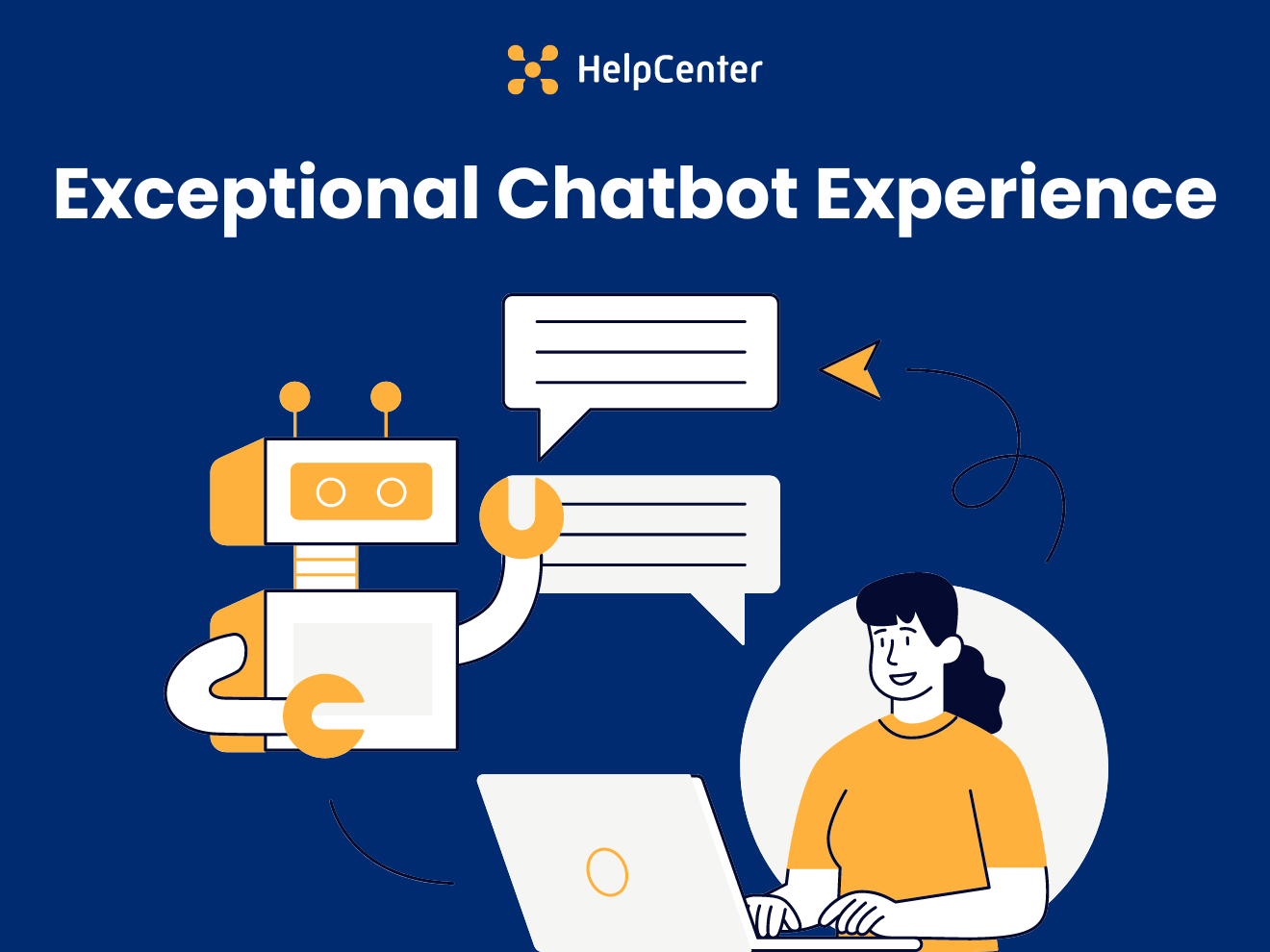As a business owner, it is crucial to prioritize the optimal experience for your customers when they engage with your brand. In today's highly competitive market, providing a delightful and supportive journey for customers is essential in distinguishing your company from its rivals.
Customer experience now plays a pivotal role in determining the success of a business. Every business aims to deliver an outstanding experience, ensuring customers return for repeat business. This entails ensuring their interactions with your products or services are pleasant, efficient, and effective. To ensure your customers enjoy the finest experience possible, you can implement various strategies, such as integrating AI chatbots. Are you prepared to enhance customer satisfaction, foster loyalty, and drive engagement? You have the opportunity to elevate your customers' experience through simple yet impactful tactics. In this article, we will explore the most effective strategies to make your customers feel truly valued.
Chatbots in Enhancing Customer Experience
Chatbots have revolutionized customer service by providing automated assistance through conversational interfaces. These AI-powered virtual agents simulate human-like conversations and offer real-time support to users. With the advancement of natural language processing and machine learning, chatbots have become increasingly sophisticated, enabling businesses to deliver exceptional customer experiences.
In today's fast-paced digital world, customers expect quick responses and personalized interactions. This is where chatbots play a vital role. They are available 24/7, capable of handling multiple inquiries simultaneously, and can provide instant solutions to common customer queries. As a result, they have become an indispensable tool for businesses across various industries.
AI-chatbots not only streamline customer support, but also offer significant cost savings for companies. By automating routine inquiries, businesses can free up their human agents to focus on more complex and value-added tasks. Additionally, chatbots can provide consistent responses and maintain context, ensuring a seamless customer journey across different touchpoints.
In fact, implementing chatbot automations has proven to be highly beneficial for customer service teams, saving them an impressive 330 hours per month, which accounts for approximately 85% of their total workload.
The growing importance of chatbots in customer service is evident from their widespread adoption by both small startups and large enterprises. They are being integrated into websites, messaging platforms, mobile apps, and even social media channels, enabling businesses to meet their customers wherever they are.
For example, ASOS, a well-known online fashion retailer, has integrated a chatbot into their website and mobile app. This chatbot offers personalized styling advice, recommends products, and helps customers with their inquiries. By leveraging the chatbot, ASOS enhances the shopping experience and provides tailored assistance, contributing to their business growth.
Effective Strategies for Success
Strategy #1. Focus on Personalization.
Personalization is a crucial strategy to deliver an exceptional chatbot experience. By tailoring interactions to individual users, businesses can create a more engaging and relevant experience that meets the specific needs and preferences of each customer. Here are some key considerations for implementing personalization in chatbot interactions:
- Leverage Customer Data. Use customer information to personalize chatbot interactions and offer tailored recommendations and assistance.
- Adaptive Responses. Adjust the chatbot's approach based on user feedback and sentiment, apologizing if needed and offering alternative solutions.
- Personalized Recommendations. Utilize algorithms and machine learning to provide personalized product recommendations based on user preferences and browsing behavior.
User Profiling. Create user profiles to store relevant customer information and preferences for consistent personalized experiences across channels.
Strategy #2. User-friendly Interface.
A user-friendly interface is essential for delivering an exceptional chatbot experience and improve customer satisfaction. It ensures that users can easily interact with the chatbot and find the information or assistance they need. Consider the following factors when designing a user-friendly interface:
- Simplicity and Clarity. Keep the interface simple and easy to navigate. Use clear and concise language in prompts and instructions to guide users effectively. Avoid complex or ambiguous terminology that may confuse users.
- Intuitive Design. Create an interface that users can easily understand and interact with. Use familiar chat-based interfaces that mimic human conversations, making it natural for users to engage with the chatbot. Incorporate visual cues, such as typing indicators or chat bubbles, to enhance the conversational experience.
- Error Handling. Design the chatbot interface to handle errors gracefully. If a user enters incorrect information or asks an unclear question, the chatbot should provide helpful suggestions or clarification to guide the user and prevent frustration.
- Progress Indicators. Incorporate progress indicators or status updates within the interface, especially for tasks that require multiple steps. This helps users understand where they are in the conversation or process and provides a sense of progression.
- Visual Appeal. Pay attention to the visual aesthetics of the chatbot interface. Select an attractive color scheme, ensure legible font styles, and use appropriate images and icons to create an engaging and visually appealing interface.
A well-designed interface enhances the overall chatbot experience, enabling users to navigate seamlessly and obtain the information or assistance they need efficiently.
Strategy #3. Implement Artificial Intelligence (AI) and Natural Language Processing (NPL).
AI and NLP play crucial roles in enhancing chatbot capabilities and improving the overall chatbot experience. AI empowers chatbots to simulate intelligent interactions, learn from data, and adapt their responses over time. NLP enables chatbots to understand and interpret human language, including extracting meaning, identifying intents, and performing sentiment analysis. With AI and NLP, chatbots can recognize user intents, maintain contextual understanding, engage in natural conversations, personalize interactions, and provide relevant and accurate assistance. These technologies enable businesses to deliver exceptional chatbot experiences that enhance customer satisfaction and drive successful outcomes.

Strategy #4. Multichannel Integration.
Enabling multichannel integration is essential for delivering an exceptional chatbot experience. By integrating the chatbot across various channels, businesses can meet their customers wherever they are and provide consistent support.
When it comes to choosing a chatbot for multichannel integration, the HelpCenter app's chatbot stands out as an excellent choice. With its robust features and user-friendly interface, the Helpcenter app's chatbot offers seamless integration across multiple channels, including websites, mobile apps and social media platforms. By leveraging the Helpcenter app's chatbot, businesses can ensure a unified and efficient customer support experience across different channels, leading to improved customer satisfaction and loyalty.
Strategy #5. Continuous Improvement.
As technology evolves and customer expectations change, it is essential to stay proactive and continuously enhance the chatbot's capabilities. The HelpCenter team understands the importance of continuous improvement and works diligently to meet customer expectations.
Our team actively engages with customers, collecting their feedback and suggestions on how to further improve the app. The customer support team plays a vital role in this process by gathering valuable insights from customers and forwarding them to the development team. This feedback loop allows us to identify areas for enhancement, address any issues or concerns, and prioritize new features based on customer needs.
By actively listening to customers and implementing their feedback, the Helpcenter team ensures that the chatbot evolves and adapts to meet the changing requirements and expectations of users. This dedication to continuous improvement not only enhances the chatbot's functionality, but also demonstrates a commitment to providing an exceptional customer experience.
Through ongoing improvements and customer-driven enhancements, the HelpCenter app remains at the forefront of delivering top-notch customer support and satisfaction. The HelpCenter team's collaborative approach and dedication to continuous improvement contribute to the app's success in meeting and exceeding customer expectations.
Strategy #6. Proactive Assistance.
Implementing proactive assistance is essential for delivering an exceptional chatbot experience. It involves anticipating customer needs and offering assistance before they ask for it. Here's how to implement proactive assistance:
- Trigger-based Notifications. Set up triggers to identify events that prompt proactive assistance, such as abandoned carts, and send personalized messages to encourage action.
- Predictive Analytics. Use data analysis to anticipate customer needs and offer relevant suggestions or solutions based on past behavior and preferences.
- Customer Onboarding and Education. Guide new customers through onboarding and educate them about key features or benefits.
- Proactive Problem Resolution. Address potential issues or FAQs proactively by providing troubleshooting steps or helpful tips.
- Timely Reminders and Updates. Provide notifications about order status, product releases, sales, or industry news to keep customers informed.
Proactive assistance shows attentiveness, saves time, and provides value to customers. By anticipating needs and taking proactive measures, businesses can enhance satisfaction and build lasting relationships.
Conclusion
AI in customer service is a game-changer for businesses seeking to provide exceptional support experiences. By implementing the strategies discussed in this blog post, businesses can harness the power of AI-powered chatbots to create meaningful connections with customers.
The HelpCenter app serves as a valuable resource for businesses looking to enhance their customer support capabilities. With its AI-powered chatbot and user-friendly interface, businesses can leverage the app to deliver exceptional customer experiences. By embracing AI and incorporating the strategies outlined in this post, businesses can optimize their chatbot interactions, streamline support processes, and meet the evolving expectations of their customers.




